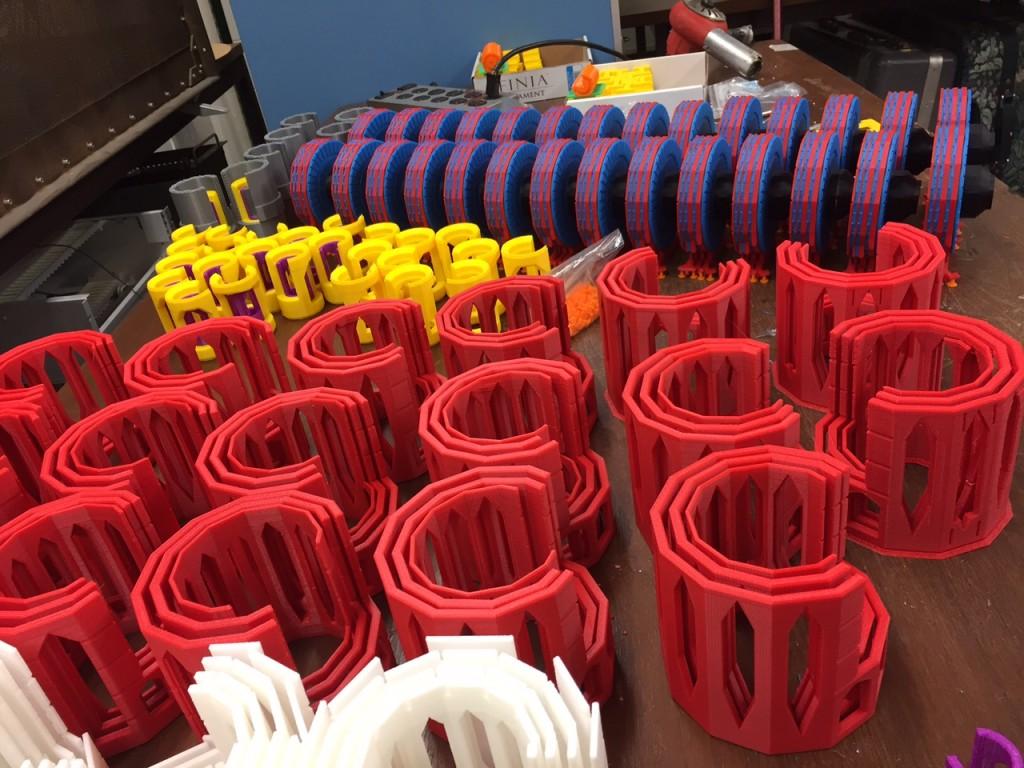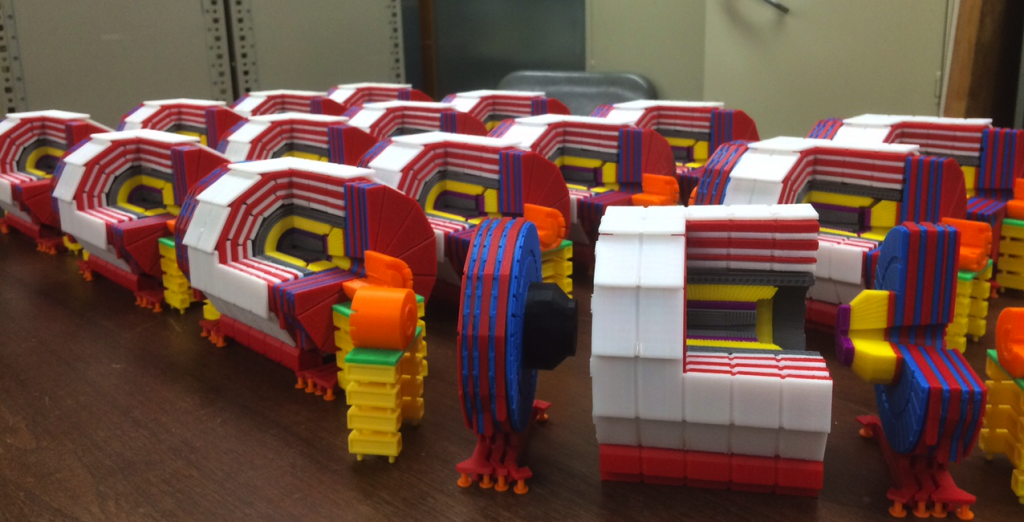 It was July 4, 2012 when researchers at CERN’s Large Hadron Collider (LHC) made a major announcement: the Higgs boson, an elementary particle crucial to particle physics theory, was discovered. The world’s largest and most powerful particle collider had been a success, but its work had only begun.
It was July 4, 2012 when researchers at CERN’s Large Hadron Collider (LHC) made a major announcement: the Higgs boson, an elementary particle crucial to particle physics theory, was discovered. The world’s largest and most powerful particle collider had been a success, but its work had only begun.
While the Large Hadron Collider is what gets all the media attention, it’s actually the two particle physics detectors built on the LHC that deserve much of the credit. One of these detectors is known as the Compact Muon Solenoid (CMS), and it has several goals, among them, to search for extra dimensions as well as find particles which may make up the very elusive dark matter that likely exists in our universe.
One of the collaborators on the CMS experiment is a man named James Wetzel, PhD at the University of Iowa’s High Energy Physics Department. Wetzel also happened to own a 3D printer and had some experience within the realm of 3D modeling and CAD.
“The CMS experiment is a large experiment on the Large Hadron Collider in Geneva Switzerland, at CERN, a leading European physics laboratory,” Wetzel explained to 3DPrint.com. “[I created a] 1:120 scale model of the experiment, showing off the main active components. The point of the model is for presentations, and to allow people to really see what a presenter is talking about, or an instructor is trying to explain. It is much more useful than a 3D model.”
The model was created by Wetzel himself using SolidWorks. He used the official technical data reports from the experiment itself to obtain the exact dimensions of each component, and also turned to the SketchUpCMS project for some of the ‘hard to reach’ dimensions. He then printed the model on an Afinia H480, which has a build envelope of 5″ x 5″ x 5″, perfect for the dimensions of the model he had created.
“I think it’s around 20 separate pieces,” Wetzel explained to us. “The endcaps (alternating blue and red pieces on the ends of the model) are a single piece, but I switched the filament mid-print. The Afinia software allows you to enter multiple stop points, so I had it stop at every color change. The red and white alternating layers of the main middle part of the model are each one piece – one white, and one red, and they slide into each other. Those each take around 10-12 hours to print.”
What first started out as a little side project turned into a massive undertaking. One of the outreach coordinators at the Fermi National Accelerator Laboratory, outside of Batavia, Illinois, contacted him after seeing his 3D printed model and asked if it was possible to produce 70 of the models–one for each of the US-based institutes taking part in the experiment, along with 20 extras for some of the VIPs involved. Considering that each model measures about 5 inches around and 10 inches wide, and requires approximately 50 hours of print time apiece, this certainly was no longer only a side project.
asked if it was possible to produce 70 of the models–one for each of the US-based institutes taking part in the experiment, along with 20 extras for some of the VIPs involved. Considering that each model measures about 5 inches around and 10 inches wide, and requires approximately 50 hours of print time apiece, this certainly was no longer only a side project.
Initially Wetzel researched companies that may be able to print all 70 of the models for him, but quickly found that such an order would be incredibly expensive. One company quoted him $130,000, while another company quoted him a price that was around $1 million.
Fed up with corporate greed, he decided to take a cheaper approach, 3D printing all 70 models himself! To do this, he set up a total of 6 Afinia H480 3D printers side by side, and created a micro manufacturing facility on his desk. Using Afinia’s premium filament, a type of ABS, he has been meticulously printing out the 1,400+ pieces which make up all 70 of these models, constructing them as the parts became available. While he has not finished quite yet (he still has around a week of printing and assembly to go) Wetzel says that he’s used up about $2,000 worth of ABS filament thus far–a far cry from the $1 million that one company asked for. Wetzel also is considering selling the fully printed models to the public for around $275 once he has completed this large order for the Fermi National Accelerator Laboratory
Wetzel plans on uploading all the files necessary to construct this model sometime soon, and will be posting instructions and the STL files here when ready. Check out the additional video below showing some of the process he used to create these incredible CMS models, and let us know your thoughts on this project in the 3D Printed Large Hadron Collider Experiment forum thread on 3DPB.com.
Subscribe to Our Email Newsletter
Stay up-to-date on all the latest news from the 3D printing industry and receive information and offers from third party vendors.
You May Also Like
3D Printing News Briefs, April 13, 2024: Robotics, Orthotics, & Hypersonics
In 3D Printing News Briefs today, we’re focusing first on robotics, as Carnegie Mellon University’s new Robotics Innovation Center will house several community outreach programs, and Ugogo3D is now working...
Rail Giant Alstom Saves $15M with 3D Printing Automation Software 3D Spark
3D Spark has entered into a three-year deal with the rail giant Alstom. Alstom, a transport behemoth with annual revenues of $16 billion, specializes in the manufacture of trains, trams,...
Meltio Expands Global Reach with New Partnerships in the Americas and Europe
Spanish 3D printing manufacturer Meltio has expanded its sales network across the globe. With the addition of three new partners in the United States, Brazil, Argentina, and Italy, Meltio aims...
3D Printing Webinar and Event Roundup: April 7, 2024
Webinars and events in the 3D printing industry are picking back up this week! Sea-Air-Space is coming to Maryland, and SAE International is sponsoring a 3D Systems webinar about 3D...

































